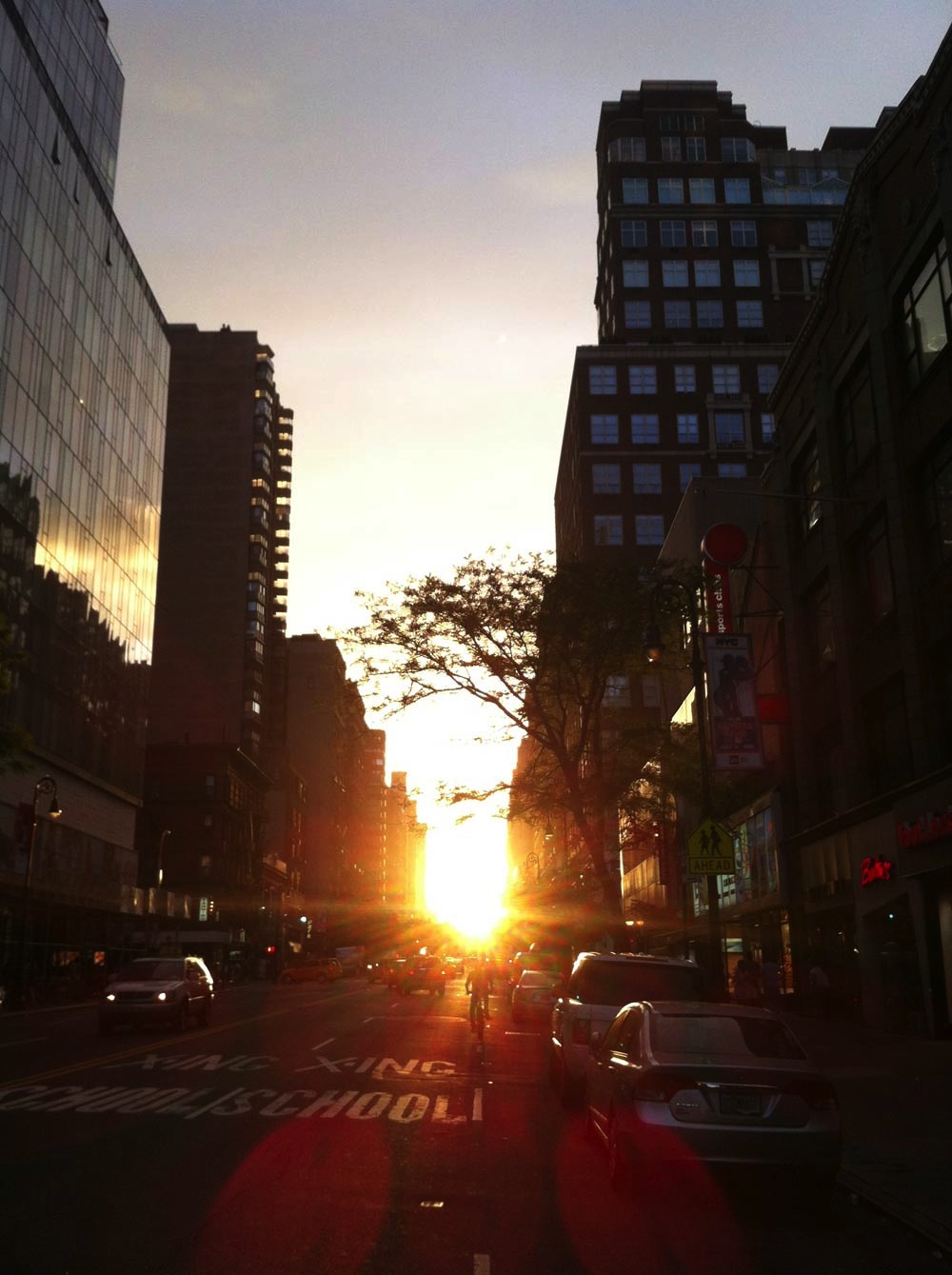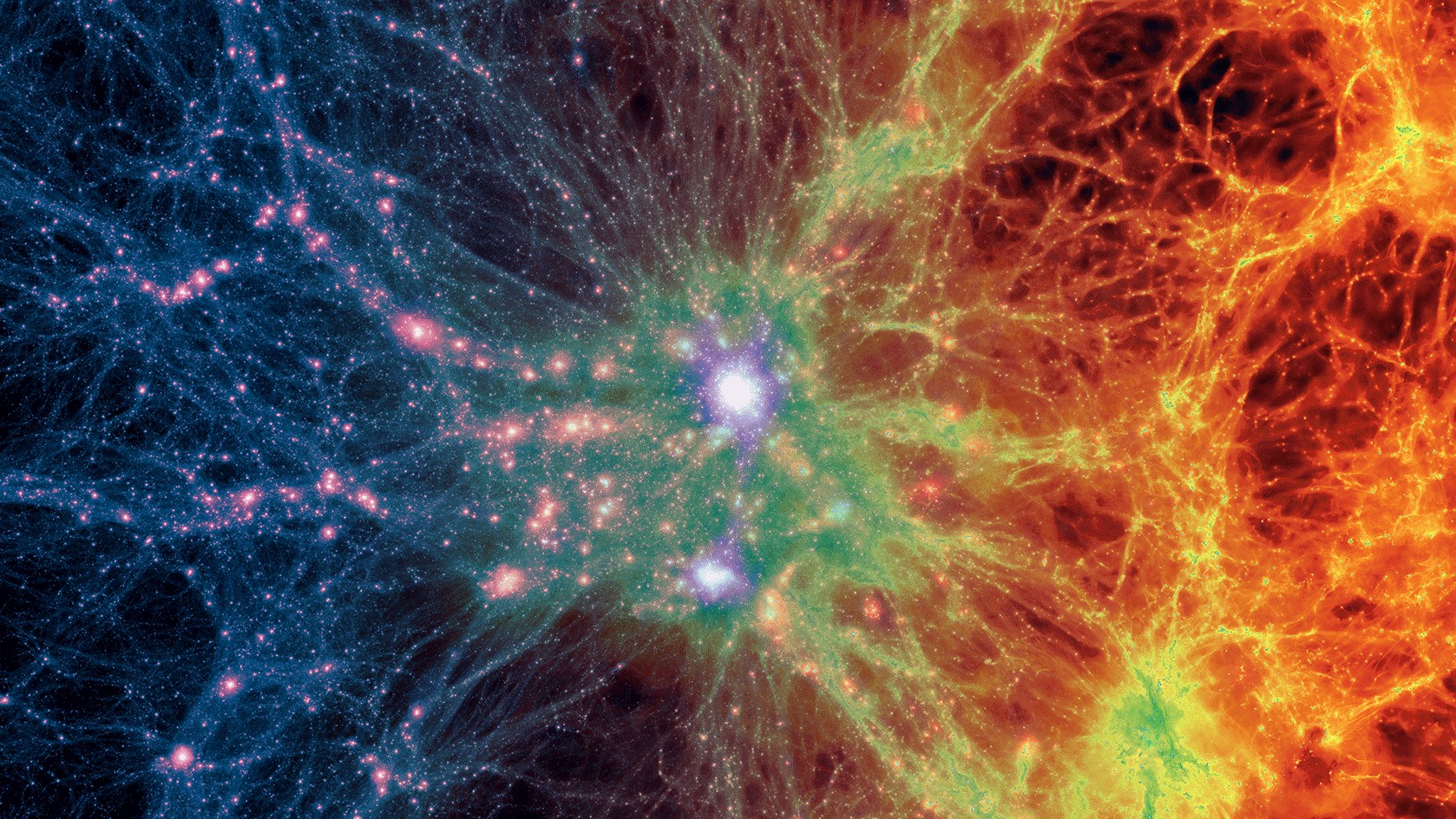'Manhattanhenge' Sunset Lights Up NYC Streets Tonight

New Yorkers may be treated to a stunning sunset tonight (July 11), with the return of a phenomenon known as "Manhattanhenge," which occurs when the setting sun aligns with Manhattan's grid of streets.
As the sun sets, it floods the city with light, giving the north and south sides of every cross street an orangey-pink glow. The eye-catching event occurs four times a year — two pairs of consecutive sunsets — and tonight and tomorrow (July 12) will be the last times to catch Manhattanhenge in 2014.
Earlier this year, on May 29 and May 30, the Manhattanhenge sunsets were mostly spoiled by overcast conditions, but on the second day, some New Yorkers caught glimpses of the magnificent spectacle through the clouds.
Weather permitting, the full effect of Manhattanhenge will be visible tonight at 8:24 p.m. EDT. [Gallery: See Photos of Manhattanhenge Sunsets]
Astrophysicist Neil deGrasse Tyson, director of the American Museum of Natural History's Hayden Planetarium, coined the term "Manhattanhenge" in 2001, and is credited with popularizing the event.
The term "Manhattanhenge" is a play on Stonehenge, a prehistoric monument in the United Kingdom. Once a year, the rising sun is perfectly aligned with the huge stones that make up the mysterious structure.
In a blog post on the museum's website, Tyson recommends standing outside about a half hour before the time of the actual sunset to catch the most dramatic views.
Get the world’s most fascinating discoveries delivered straight to your inbox.
Some of the best places to see Manhattanhenge include the cross streets at 14th, 23rd, 34th, 42nd and 57th, and the streets immediately adjacent to these main thoroughfares. Photographers interested in capturing stunning views of the sunset can also stand on 34th Street to include the iconic Empire State Building in the shot, or on 42nd Street for shots with the Chrysler Building in the foreground, Tyson said.
It's important to note, however, that you should NEVER look directly at the sun, with the naked eye, telescopes or binoculars. The sun's rays can damage your eyes, even causing blindness in extreme cases.
Editor's Note: If you have an amazing moon or general science photo you'd like to share for a possible story or image gallery, please contact managing editor Jeanna Bryner at LSphotos@livescience.com.
Follow Denise Chow on Twitter @denisechow. Follow Live Science @livescience, Facebook & Google+. Original article on Live Science.

Denise Chow was the assistant managing editor at Live Science before moving to NBC News as a science reporter, where she focuses on general science and climate change. Before joining the Live Science team in 2013, she spent two years as a staff writer for Space.com, writing about rocket launches and covering NASA's final three space shuttle missions. A Canadian transplant, Denise has a bachelor's degree from the University of Toronto, and a master's degree in journalism from New York University.


